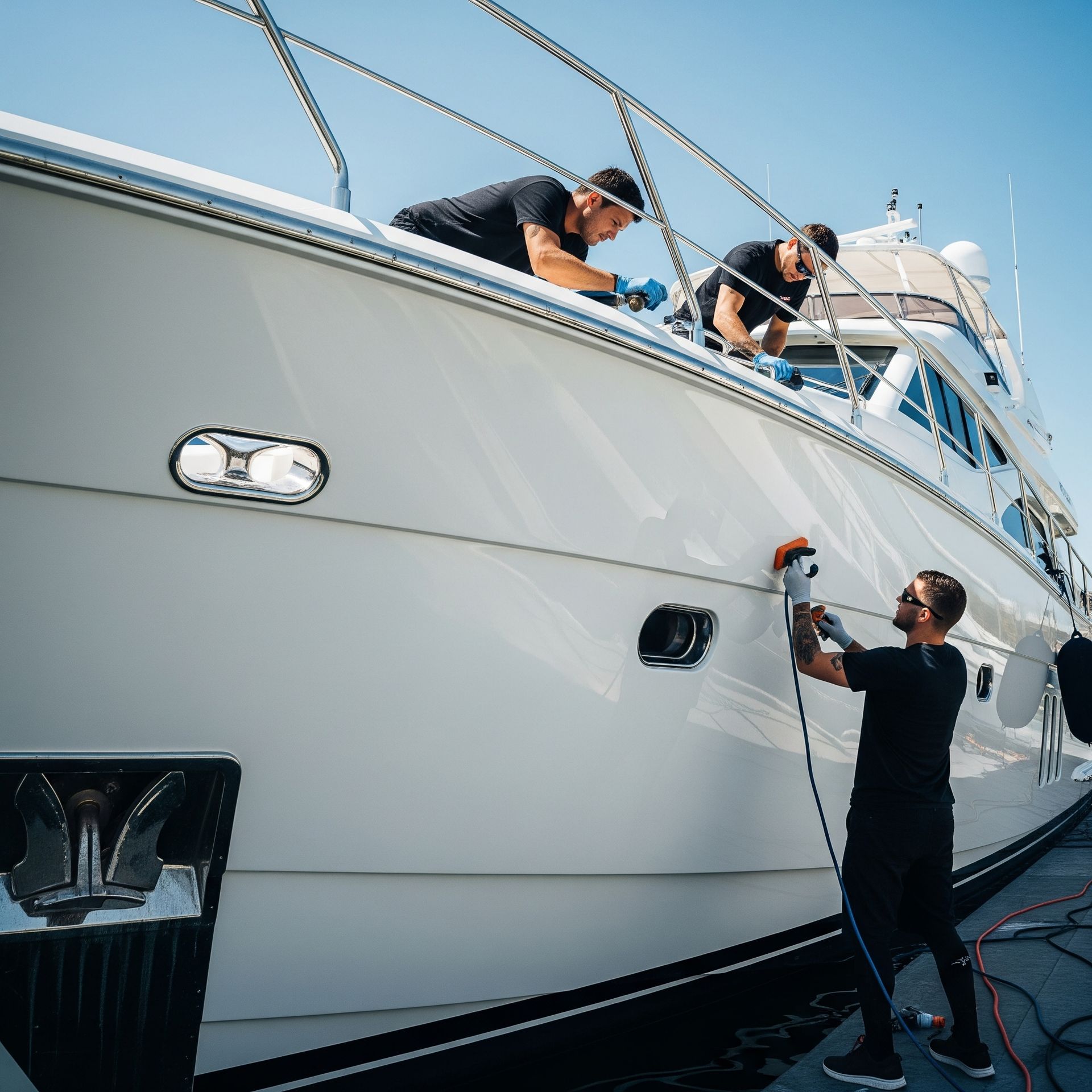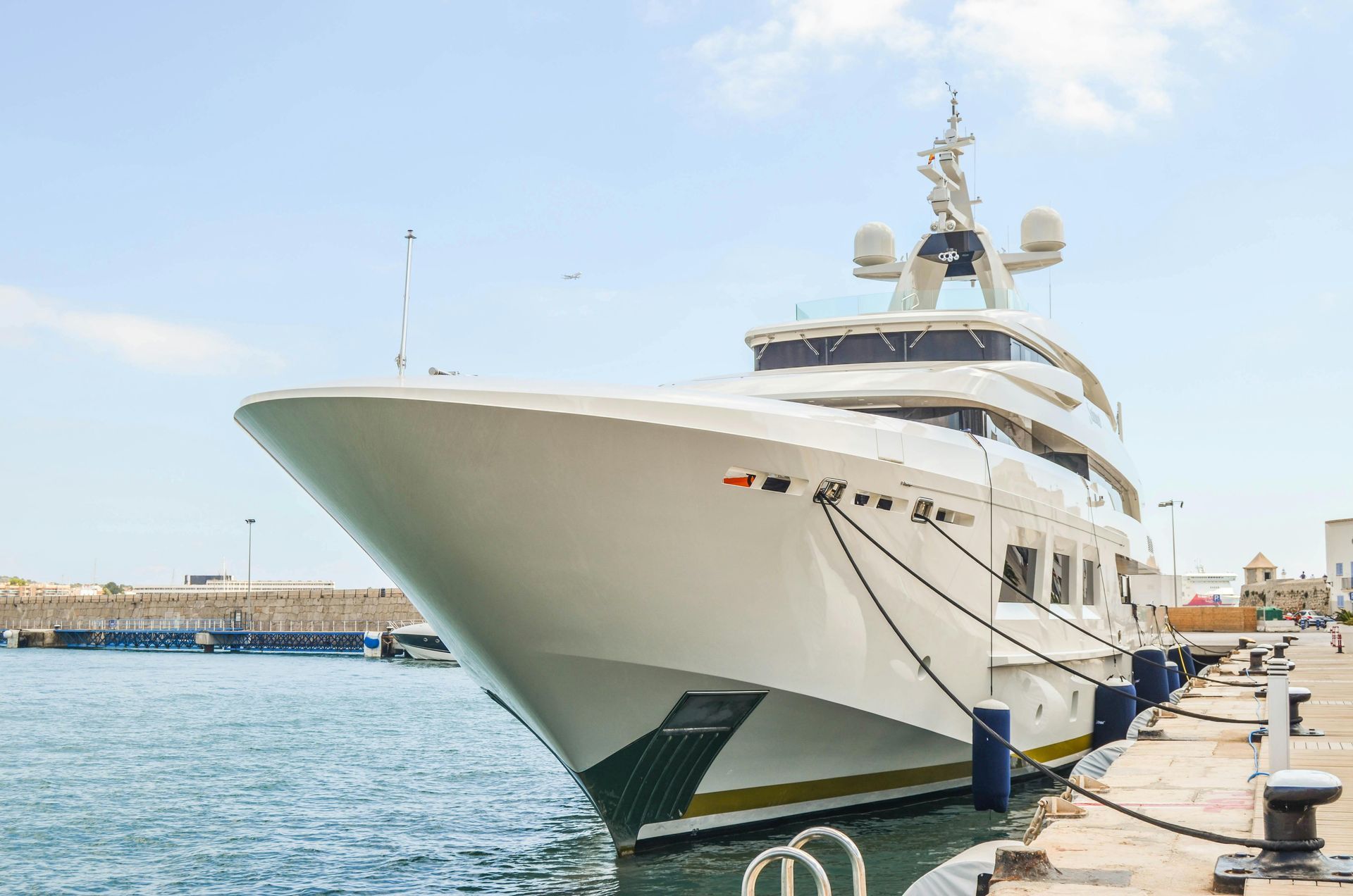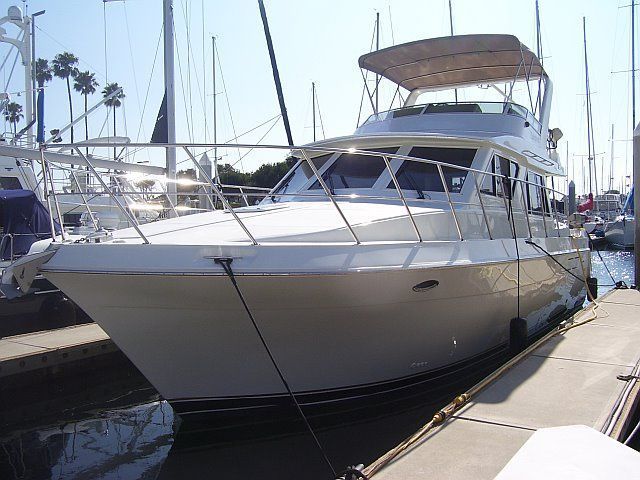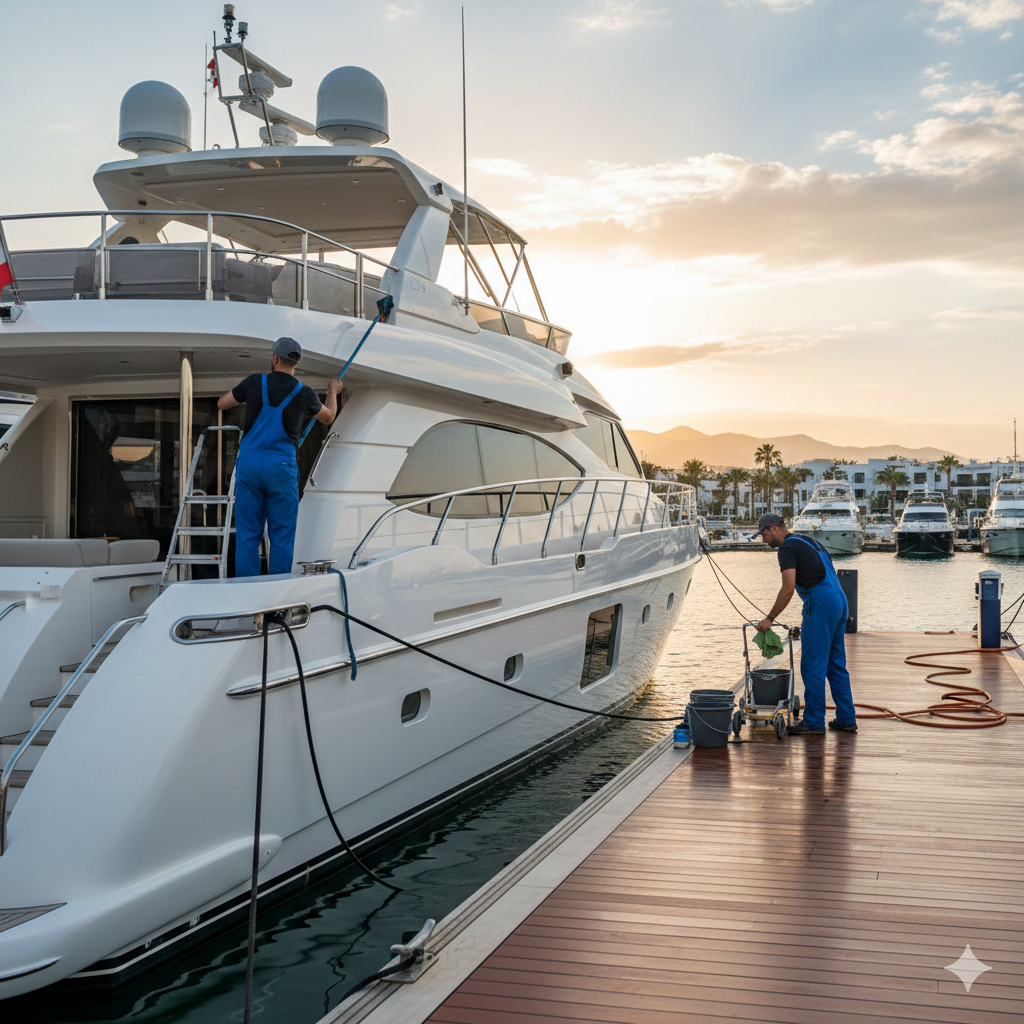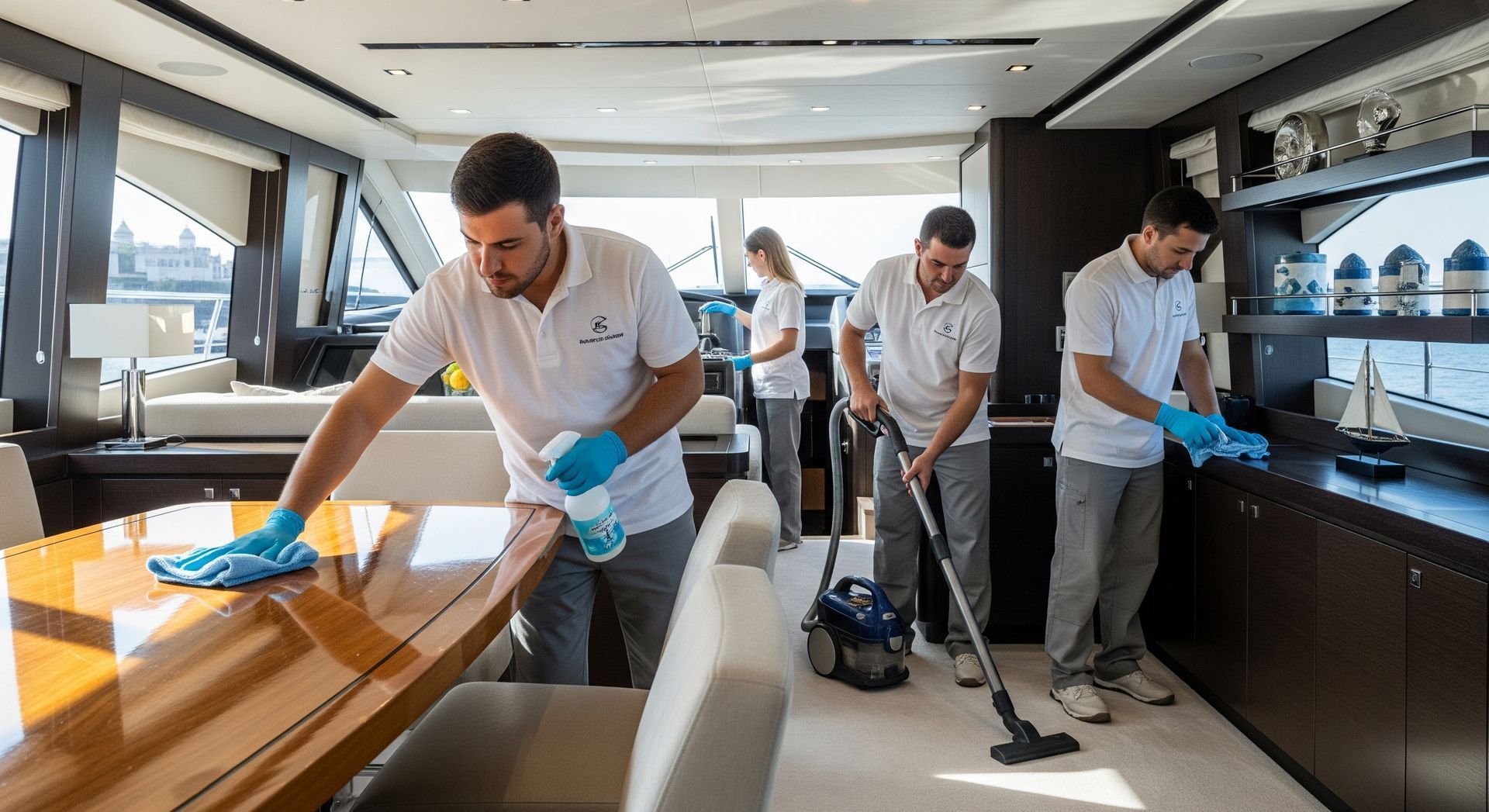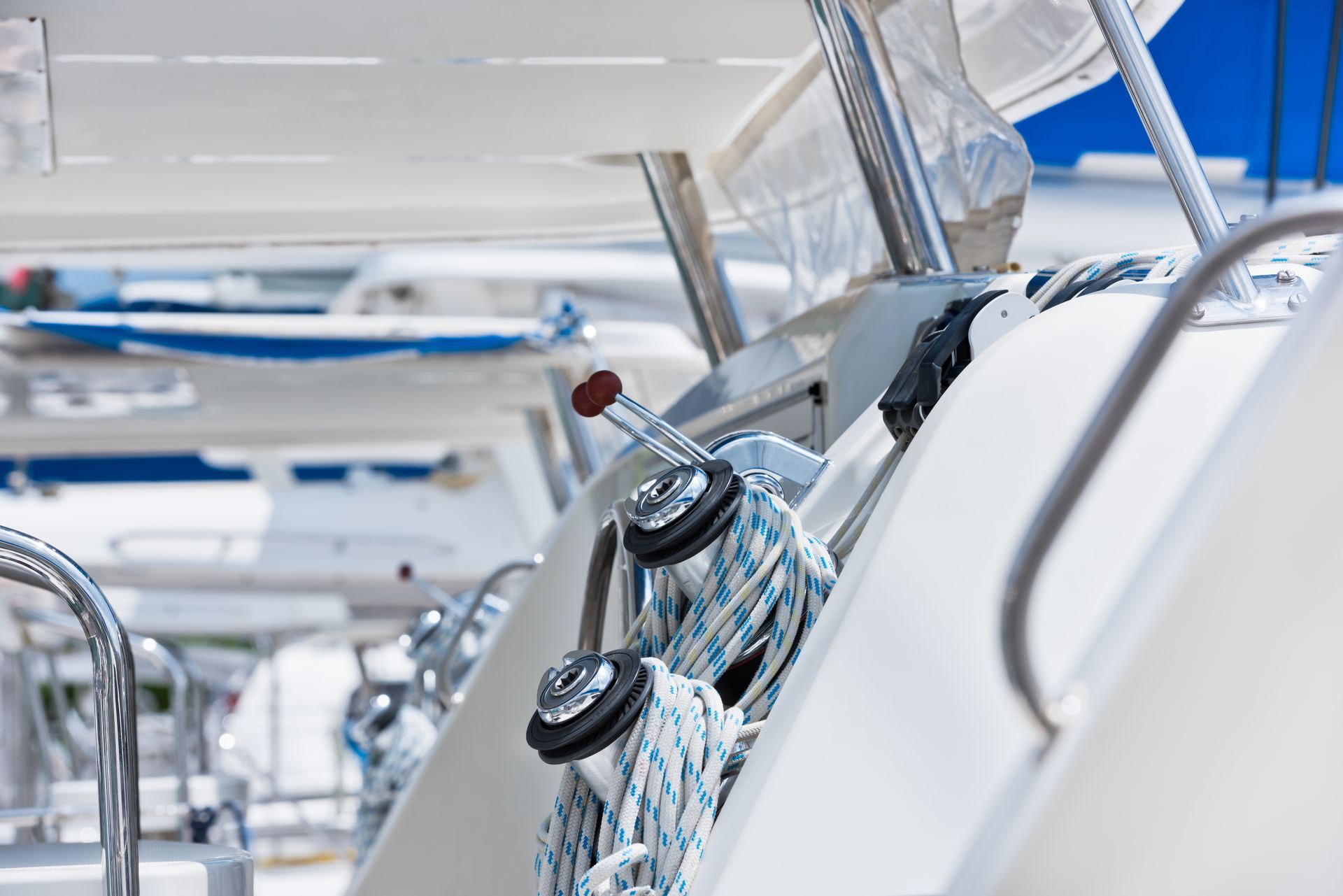Common Boat Stains and How to Remove Them Effectively
As a boat owner, you quickly get better at identifying common boat stains. Algae and mold appear as green or black patches, rust as orange streaks, and those annoying bird droppings leave distinct marks. Each of these unsightly stains needs a different fix. For algae, scrub with marine-safe cleaner; rust demands a rust remover or baking soda paste. For oil spills, absorb it first, then clean gently with gloves on. Hard water spots need a mineral cleaner, and bird mess calls for quick vinegar and water action. By keeping these tips in your pocket, you’ll know just how to tackle any stain as soon as it shows up, or until your boat's next maintenance schedule.
Key Takeaways
- Identify common stains like algae, rust, fuel spills, hard water deposits, and bird droppings for targeted cleaning.
- Use marine-safe cleaners and gentle scrubbing to remove algae, mold, and rust without damaging boat surfaces.
- Quickly contain and clean fuel or oil spills with absorbent pads and appropriate marine-safe products.
- Apply mineral cleaners or water softeners to tackle hard water stains and prevent future buildup.
- Remove bird droppings promptly with eco-friendly solutions and soft cloths to avoid surface damage.
Identifying Algae and Mold Stains on Your Boat
If you’ve ever noticed greenish or blackish patches creeping on your boat, you’re probably dealing with algae or mold stains. Algae growth loves damp, shady spots, and it can turn your shiny hull into a green mess before you know it. Mold, on the other hand, often shows up as dark, fuzzy spots and thrives in warm, humid environments.
You’re not alone in this—almost every boat owner faces these pesky stains. The good news? Recognizing them early helps with mold prevention and keeps your boat looking sharp.
Keep an eye on areas that stay wet or shaded for long stretches, like under seats or near waterlines. When you spot these stains, it’s a sign to act fast. Regular cleaning and proper ventilation can slow down algae growth and mold buildup.
Effective Techniques for Removing Rust Stains
Just like algae and mold can sneak up and leave their mark, rust stains have a way of showing up when you least expect them. The good thing is that these stains can come out. When you spot those orange-brown streaks, get a rust remover designed for boats. Apply it carefully, let it sit a bit, then scrub gently with a soft brush. Rinse thoroughly, and the stains would appear so much better.
For tougher rust, a paste made from baking soda and water can work wonders—just let it chill on the stain before scrubbing.
Remember, rust prevention is key, so keep metal parts dry and apply protective coatings regularly. Investing time in rust treatment now saves you from bigger headaches later.
With a little care and these simple tricks, your boat will stay looking sharp and ready for your next adventure, rust-free and proud.
How to Clean Fuel and Oil Spills Safely
While fuel and oil spills on your boat can feel like a mini disaster, cleaning them up safely doesn’t have to be a headache.
First, know your fuel types—gasoline, diesel, or marine oil—because each needs careful handling. Start by containing the spill quickly using absorbent pads or special oil containment booms to stop it from spreading.
Don’t just wipe it down with a rag; that can push the stain deeper or cause slippery spots. Instead, use a marine-safe cleaner designed for fuel and oil stains. Apply it gently, let it sit a few minutes, then scrub with a soft brush.
Always wear gloves to protect your skin and work in a well-ventilated area—those fumes aren’t fun for anyone.
Tackling Hard Water and Mineral Deposits
Even though hard water and mineral deposits might sound harmless, they can really mess with your boat’s sparkle and performance. Those stubborn white spots aren’t just ugly; they can eat away at the finish if you ignore them.
Here’s how to tackle them like a pro:
- Use water softeners to prevent mineral buildups right from the start. They’re your boat’s best friend against hard water.
- Grab a quality mineral cleaner designed specifically for boats. These cleaners break down deposits without harming the boat's surface.
- Apply the cleaner gently with a soft cloth or sponge, and don’t forget to rinse thoroughly with fresh water.
- Repeat as needed, but avoid harsh scrubbing; you want to clean, not scratch.
With these tips, your boat will shine bright, ready for all your adventures.
Removing Bird Droppings Without Damaging the Surface
Bird droppings may seem like just a messy nuisance, but they can actually harm your boat’s surface if you’re not careful.
First, you’ll want to figure out what kind you’re dealing with, since some are trickier to clean than others. Here are some safe cleaning tricks to keep your boat looking great without any lasting damage from bird poop.
Identifying Bird Dropping Types
How do you tell which kind of bird dropping you’re dealing with before scrubbing your boat? It’s all about bird dropping identification, that is, knowing the color variations of various droppings.
Different birds leave different marks, so recognizing these helps you clean without damage. Here’s a quick guide:
- White and chalky? That’s usually seagull droppings, which are high in salt and acid.
How to clean: Use a mild, acid-neutralizing cleaner or a mixture of water and baking soda to gently clean and neutralize the acidic residue. Avoid harsh scrubbing to prevent surface damage.
- Dark and mushy? Pigeons often leave these; they can stain if left too long.
How to clean: Soften the stain with warm water first, then apply a stain remover or mild detergent. Use a soft brush or cloth to gently lift the stain without spreading it.
- Greenish or yellowish? Waterfowl like ducks produce these; they’re less acidic but still sticky.
How to clean: Soak the area with warm water to loosen the sticky residue, then clean with a gentle soap solution. Rinse thoroughly to remove any residue.
- Mixed colors? Songbirds tend to leave combo droppings, so be gentle with them.
How to clean: Use a gentle, pH-balanced cleaner with a soft cloth or sponge, and avoid abrasive materials to prevent damage to the cleaned surface.
Knowing the bird type can help you pick the right cleaning method.
Safe Cleaning Solutions
Since bird droppings can be pretty tough on your boat’s finish, you’ll want to use cleaning solutions that get the job done without turning your hull into a disaster zone.
Luckily, eco-friendly cleaners are your best bet: they work well and keep your boat’s surface safe. You might even try homemade solutions, like mixing equal parts water and white vinegar or a gentle soap diluted in water.
These options are easy on the environment and tough on grime. Just spray, let it sit for a minute, then wipe gently with a soft cloth or sponge.
Avoid harsh chemicals that can eat away at your finish: remember, we want your boat shining, not crying. Stick with these safe cleaners, and you’ll keep your boat looking great while feeling good about your eco-friendly choices.
Preventing Surface Damage
You’ve picked the right cleaners, but that’s only half the battle. To keep your boat’s surface looking sharp while removing bird droppings, you need some solid preventative measures.
Here’s how to protect your vessel without causing damage:
- Act fast—bird droppings are usually acidic, so wipe them off gently as soon as you spot them.
- Use soft cloths or sponges to avoid scratching the surface.
- Rinse the area with fresh water before cleaning to loosen the droppings.
- Apply a marine-safe wax or sealant regularly for extra surface protection.
Dealing With Oxidation and Fading on Fiberglass
Although fiberglass is tough, it doesn’t mean that it’s immune to oxidation and fading, which are problems that can sneak up on you faster than you’d expect.
Oxidation is the issue when your boat’s surface starts looking dull or chalky. You’ll want to tackle oxidation removal early so it doesn’t worsen further down the road. Grab a gentle cleaner or a specialized polish, and work in small sections. The little spa session for your vessel would have your boat shining in no time.
Fading prevention is just as important. Keep your fiberglass covered or in the shade when you can, and rinse off salt and grime regularly. Consider these steps as sunscreen for your boat—protecting it from harsh UV rays that cause that washed-out look.
With these simple habits, your boat's fiberglass will stay looking sharp, making every time you hit the water feel like a fresh start with your boat buddy.
Best Products for Stain Removal and Maintenance
Picking the right products for stain removal and maintenance can make a huge difference in how your boat looks. You want the best cleaning products that are tough on stains but gentle on your boat’s surfaces.
Here are some maintenance tips to keep your boat shining:
- For stubborn stains, use a marine-specific cleaner that's designed just for your boat’s materials.
- Grab a good polish to restore shine and protect against fading and oxidation.
- A UV protectant spray helps prevent future damage from the sun. Use it.
- Keep a soft brush or sponge handy to avoid scratching while scrubbing.
With these products and tips, you’d be able to keep your vessel looking sharp all season. Your boat will get some well-deserved TLC, and the right tools will make the stain removal process a breeze for you.
Frequently Asked Questions
How often should I clean my boat to prevent stains?
Try giving your boat a good rinse after every trip, especially if you’ve been out in saltwater. Regular boat cleaning keeps algae, mold, and grime from building up, making future cleanups easier and protecting your boat’s finish in the long run.
Can boat stains affect the vessel's resale value?
Absolutely—dirty or stained surfaces can make your boat look older than it is. Keeping up with boat maintenance and stain removal not only boosts curb appeal but also helps you hold onto more value when it’s time to sell.
Are natural or homemade cleaners safe for boat surfaces?
Many eco-friendly boat cleaners—like a mix of vinegar and water or a baking soda paste—work great for light stains. Just test them first on a small spot to make sure they don’t dull your gelcoat or fiberglass shine.
How do weather conditions influence stain formation on boats?
Weather plays a big role in stain buildup. Warm, humid days invite algae and mold, while sun and saltwater speed up oxidation. A regular boat cleaning routine and proper storage go a long way in preventing weather-related stains.
What protective coatings help prevent future staining?
Marine-grade wax, ceramic coatings, and UV protectant sprays are your best friends for marine surface protection. They create a slick barrier that repels water, dirt, and sun damage—making cleaning faster and keeping your boat looking fresh.
Final Thoughts
Keeping your boat stain-free takes a little effort, but it’s worth it for that lasting shine and smooth sailing. With regular cleaning and the right products, you can easily tackle algae, rust, and other stubborn marks before they spread. A steady routine keeps your clean boat looking great, protected from damage, and ready for every adventure on the water.
Keep your boat spotless and ready—let our experts handle the cleaning and maintenance for you.
References:
https://www.boatus.com/expert-advice/expert-advice-archive/2016/january/preventing-mold-and-mildew
Share this article
